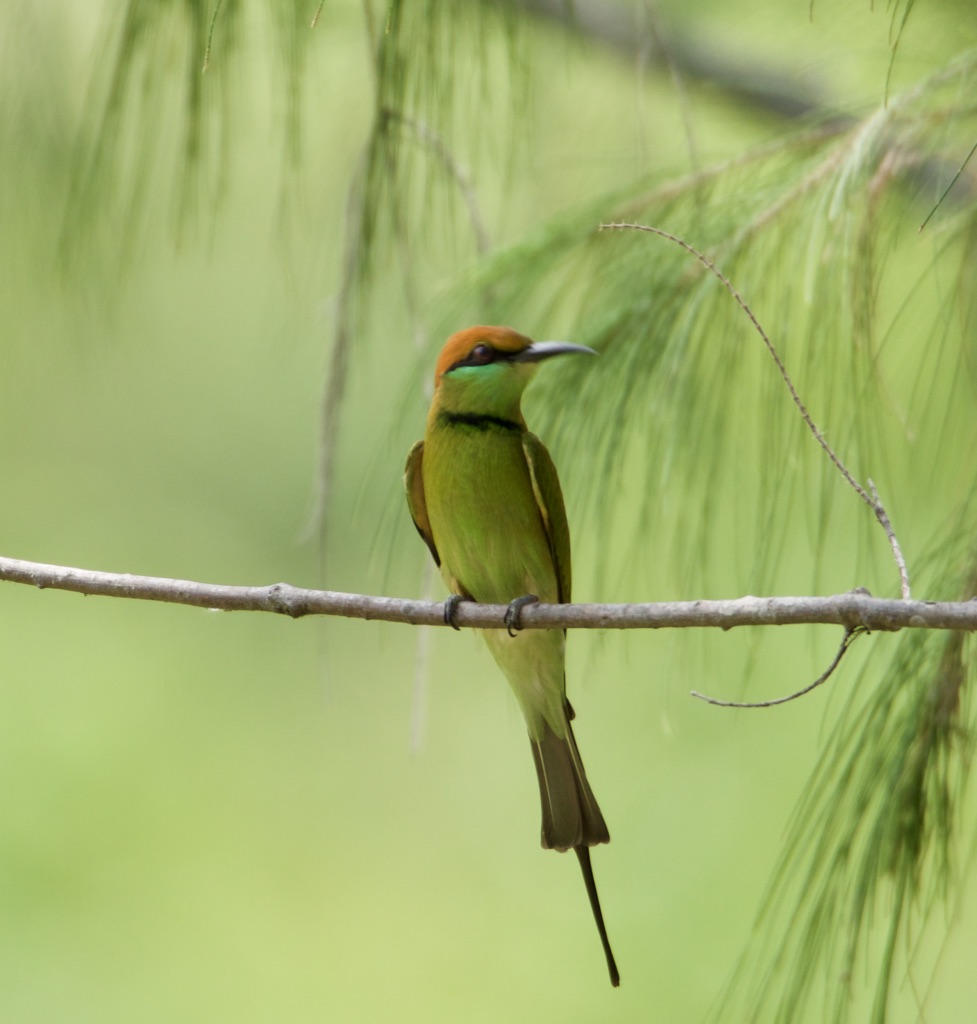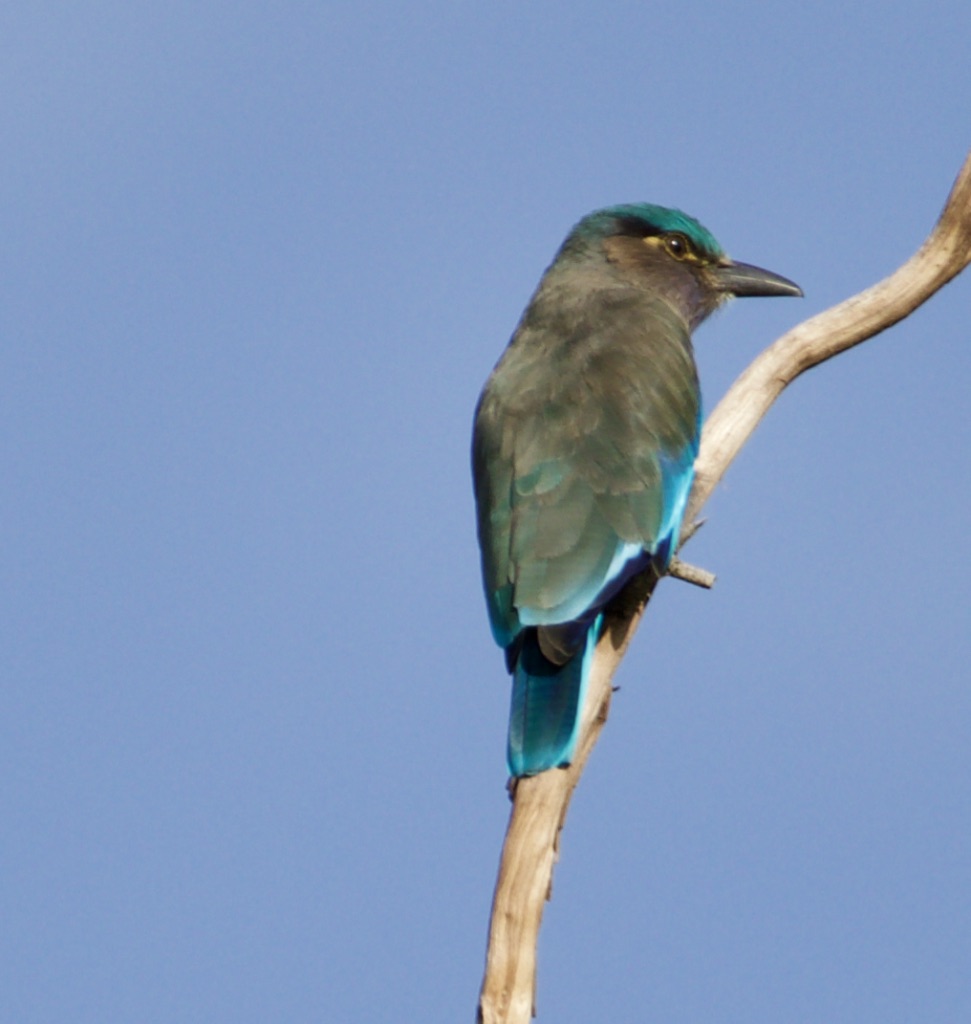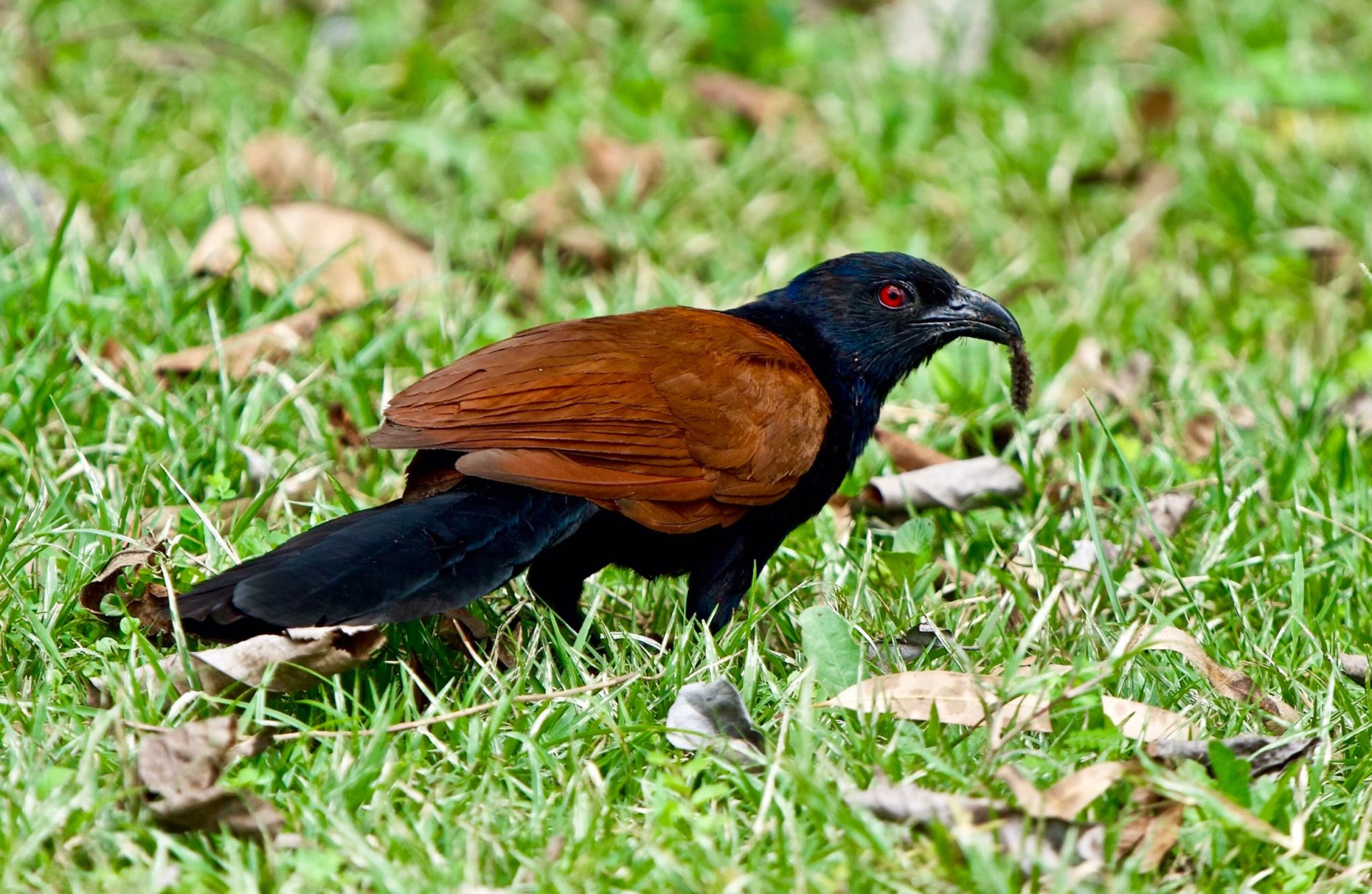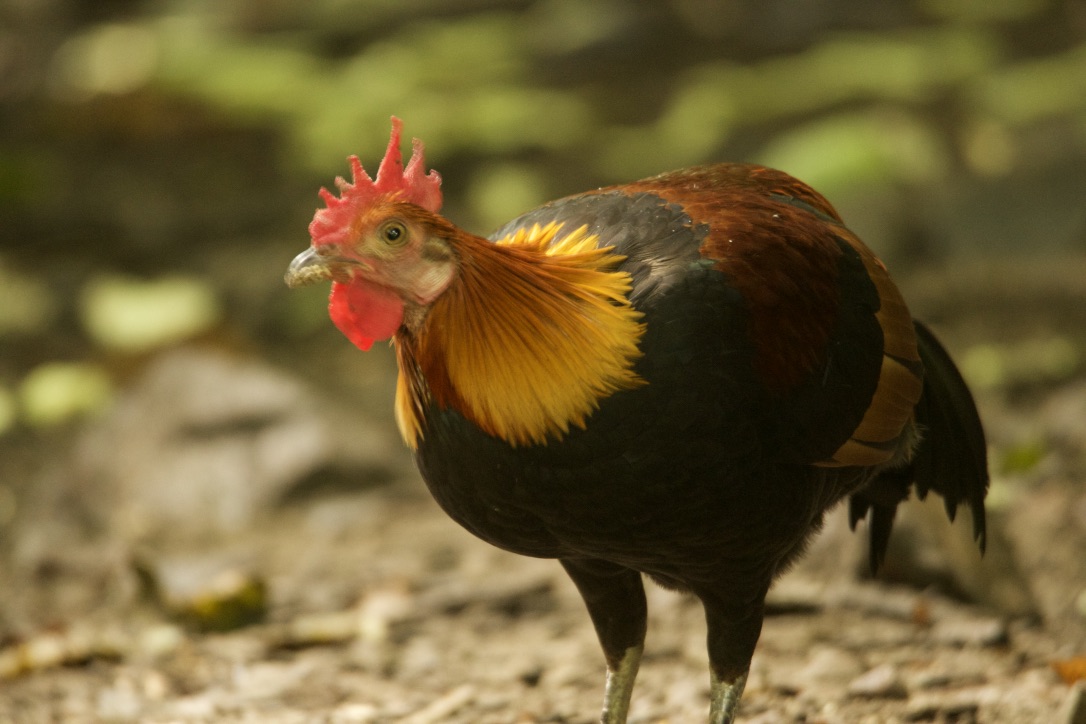Merops orientalis
Size: 16 – 18cm
Weight: 14 – 15g
Found: It is resident but prone to seasonal movements and is found widely distributed across sub-Saharan Africa from Senegal and the Gambia to Ethiopia, the Nile valley, western Arabia and Asia through India to Vietnam. They are mainly insect eaters and they are found in grassland, thin scrub and forest often quite far from water.
Description: Like other bee-eaters, this species is a richly coloured, slender bird. The entire plumage is bright green and tinged with blue especially on the chin and throat. The crown and upper back are tinged with golden rufous. The flight feathers are rufous washed with green and tipped with blackish. A fine black line runs in front of and behind the eye. The iris is crimson and the bill is black while the legs are dark grey. The feet are weak with the three toes joined at the base. Southeast Asian birds have rufous crown and face, and green underparts, whereas Arabian beludschicus has a green crown, blue face and bluish underparts. The wings are green and the beak is black. The elongated tail feathers are absent in juveniles. Sexes are alike.
Diet: They feed on flying insects and can sometimes be nuisance to bee-keepers. They have also been observed eating crabs.
Comment: A study suggested that green bee-eaters may be capable of interpreting the behaviour of human observers. They showed an ability to predict whether a human at a particular location would be capable of spotting the nest entrance and then behaved appropriately to avoid giving away the nest location. The ability to look at a situation from another’s point of view was previously believed to be possessed only by primates.





